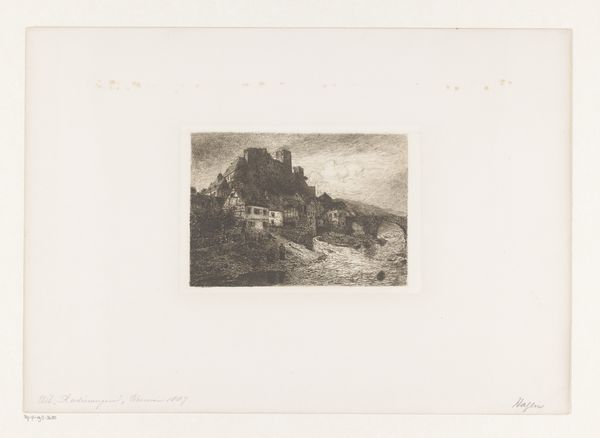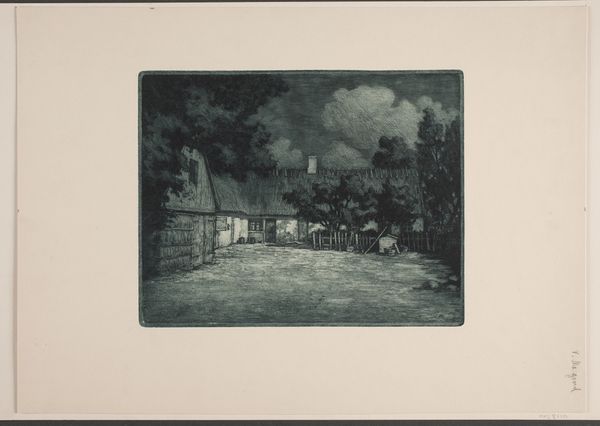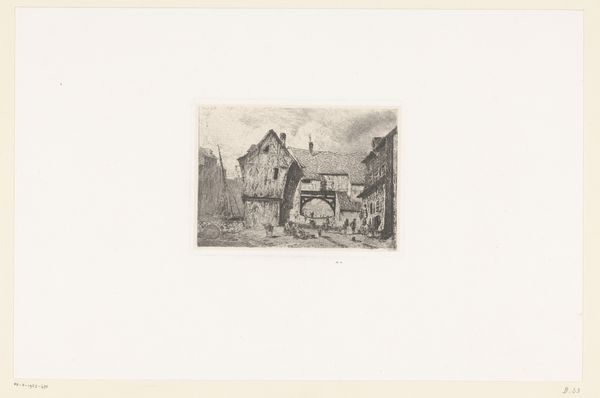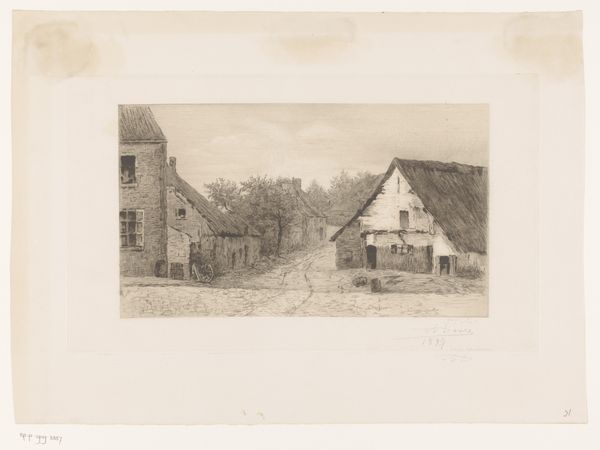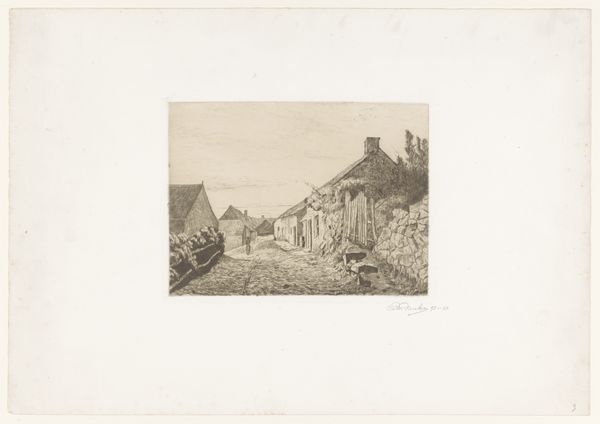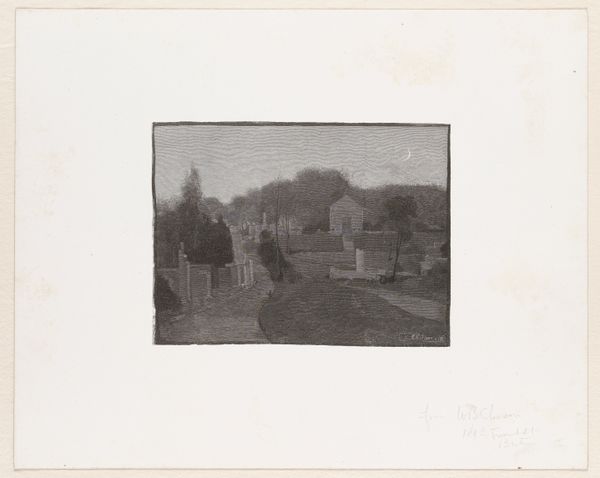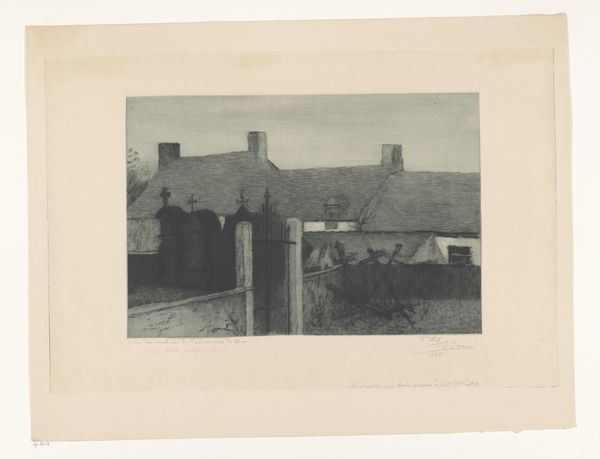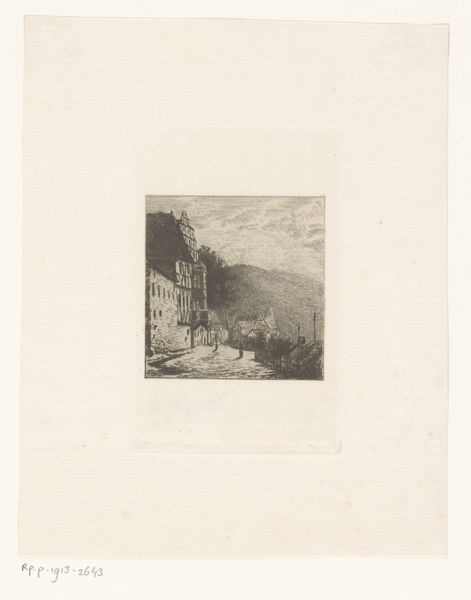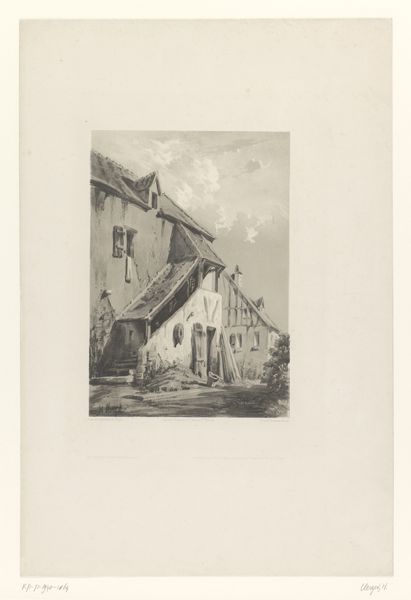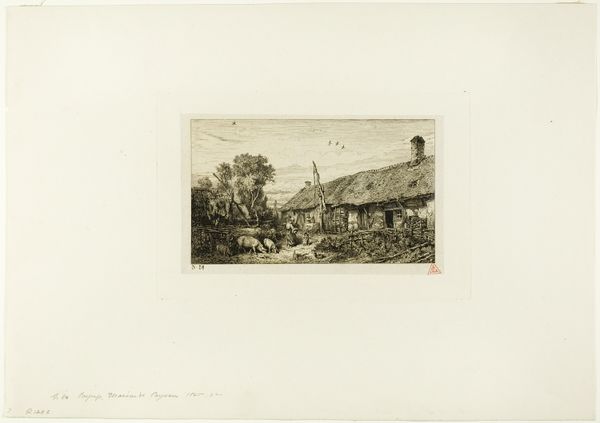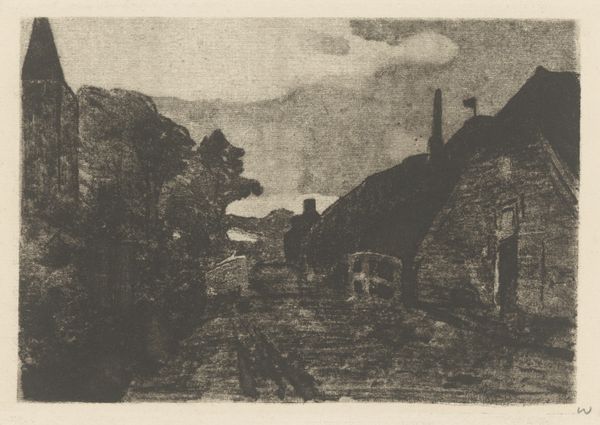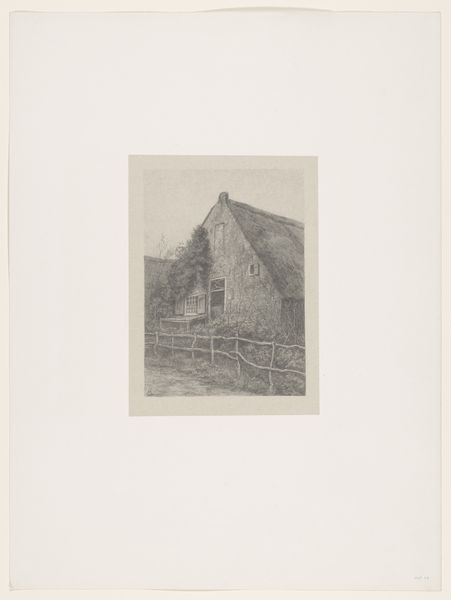
#
photo of handprinted image
#
light pencil work
#
pale palette
#
photo restoration
#
natural tone
#
ink paper printed
#
light coloured
#
watercolour illustration
#
positive shape
#
watercolor
Dimensions: height 158 mm, width 239 mm
Copyright: Rijks Museum: Open Domain
Curator: Here we have Willem Witsen’s "Dorpsweg in Diepenheim," created in 1888. It's currently held here at the Rijksmuseum. Editor: This image whispers loneliness to me. The village road appears empty, swallowed by shadow and subtle tonality. There is something subtly mournful in this artwork. Curator: The quietude you perceive definitely speaks to a significant theme in 19th-century Dutch art. Witsen, part of the Amsterdam Impressionism movement, engaged deeply with representing the changing rural landscapes in the Netherlands. Urbanization encroached upon these areas; hence the emptiness reads as loss and a lament for traditional ways of life being disrupted by modernization. Editor: Yes! Exactly that…it is a quiet, rural observation, almost like a sigh watching life shift gears. This isn't some grand historical drama; it's everyday life depicted with such understated feeling. The subdued colour palette makes it so poignant. Curator: And in considering that subtlety, we have to remember it’s a printed image— likely an etching or aquatint, given the date and style. This lends itself to that quiet atmosphere, right? The limited tonal range emphasizes certain shapes while others melt into the background in ways we might relate to feelings of disenfranchisement. Editor: You nailed it. Knowing that this is printed work emphasizes the technical skill but also emphasizes, oddly, the handcrafted nature of art and its expression: how a series of lines can convey emptiness but also a unique atmosphere and almost like an elegiac observation from an urbanized creator longing for something past. Curator: Ultimately, works such as Witsen's speak to broader narratives concerning rural decline, memory, and even the artist’s own complex relationship to a rapidly evolving society in late 19th century Netherlands. Editor: Beautifully articulated! I'm leaving with such a contemplative mood – art truly lets us connect deeply with social history on such a intimate personal scale.
Comments
No comments
Be the first to comment and join the conversation on the ultimate creative platform.
